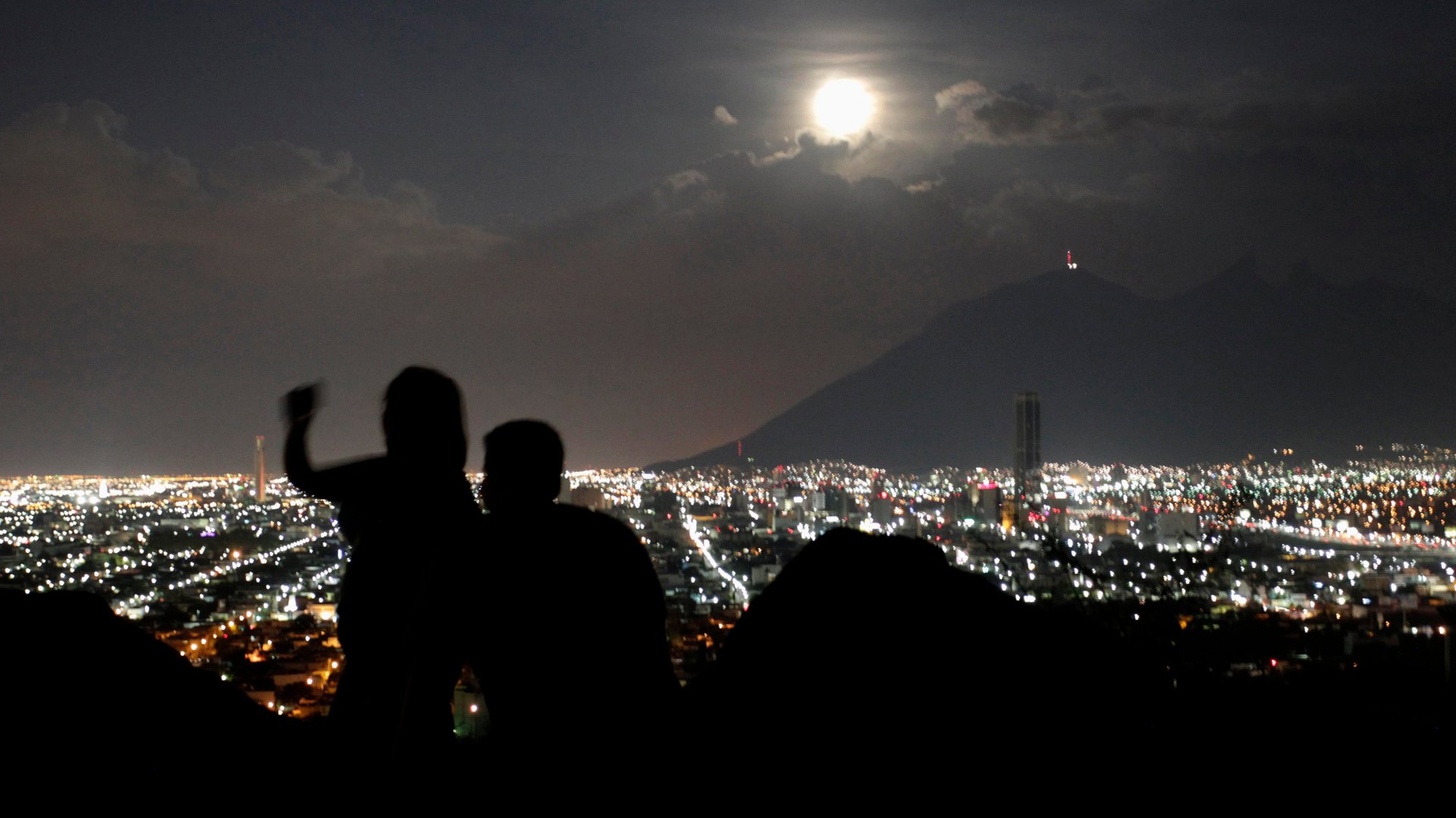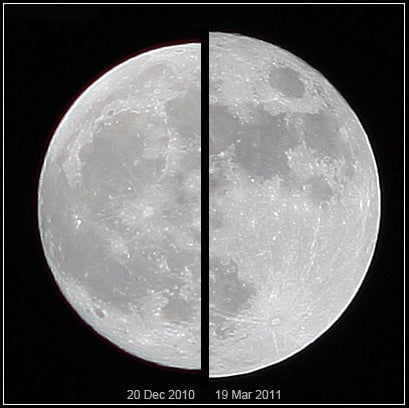How to watch and appreciate tonight’s “supermoon”
The moon follows an elliptical orbit around our planet. That means, in certain positions, it’s closer to the Earth than in others.


The moon follows an elliptical orbit around our planet. That means, in certain positions, it’s closer to the Earth than in others.
Tonight is special because it’s a full-moon phase while the moon is at its closest position to the Earth. This coincidence hasn’t happened since 1948 and won’t happen again till 2034. The “supermoon” tonight will be 15% bigger and 30% brighter than the average moon.
When can I see the supermoon?
The best time to watch it is when the moon rises tonight (Nov. 14). Check your local moonrise time here. With the moon on the horizon, you’ll also get to experience the “moon illusion” where you can compare the moon to other relatable objects on the horizon making it appear bigger than when it is high up in the sky.
If you miss the moonrise, don’t worry; the supermoon will be around all night. You just need to ensure your view is not covered by the clouds.
If the clouds don’t clear up, don’t worry either; the large moon will be around for many days to come, even though it will no longer be in the full-moon phase.

The supermoon doesn’t seem different to me. Why?
In practice, because you have nothing to compare it to in the sky, you’re unlikely to be able to tell the difference between a supermoon and an average moon. That, however, shouldn’t stop you from appreciating the full moon.
Just because the moon has always been there in the sky, you’ve probably never had the chance to understand how special this celestial body is.
Five remarkable facts about the moon
The moon was once part of the Earth. In the early days of our solar system, some 4.5 billion years ago, a Mars-sized body hit the Earth and broke a huge chunk off the planet. This chunk, according to the leading theory, became the moon.
It’s just the perfect size. By a remarkable set of coincidences, the collision that gave our planet its satellite also created the perfect-sized moon and put it in the perfect orbit around Earth. “Perfect” because, had the moon been slightly smaller or slightly further away, we would not see the spectacular total solar eclipses created when the moon perfectly blocks out the sun’s disk, leaving just the corona visible.
The moon is not Earth’s only natural satellite. In 1997, scientists found that an asteroid 5 km (3 miles) wide had been captured by Earth’s gravity. It has a bizarre, 770-year-long, horseshoe-shaped orbit and is likely to remain in orbit for at least 5,000 years.
The moon is a punching bag. The many craters you see on the moon are the result of space rocks smashing into it. Unlike the Earth, the moon doesn’t have much geological activity, which is why moon craters haven’t eroded over such a long time.
The moon is bigger than Pluto. Though now that Pluto doesn’t have planet status, this doesn’t seem as remarkable. And, yet, at its size—nearly a fourth of the diameter of the Earth—the moon is more like a planet than a satellite. Some scientists call the Earth-moon system a double planet, as they also call Pluto and its moon, Charon, which is half its diameter.